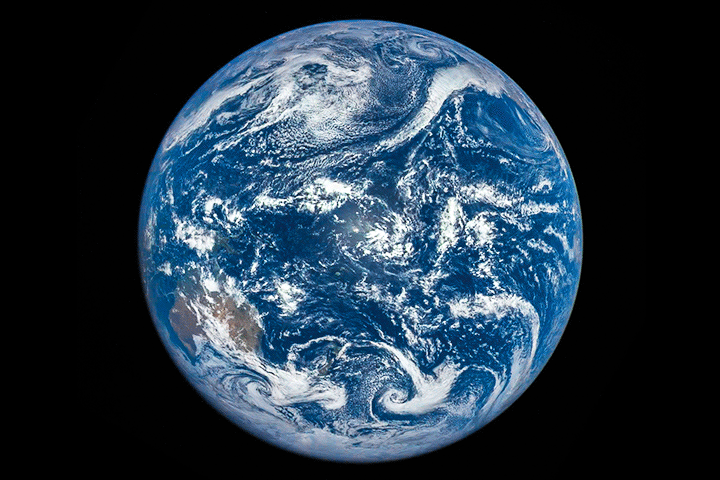Read the answers on your original post. It is stupid to start a new one.
This is tangential to the original topic. I agree with
moving this discussion to a new thread.
Anyway...
Can an object have a smaller shadow than its size?
Yes!
If the source of light is physically larger than the object casting the shadow, the size of the area where the light source is
completely blocked will be smaller than the object. Since you're referring to the size of the moon's umbra in this discussion, the umbra what I'll refer to as "the shadow" unless noted otherwise.
Can somebody show me a photo, where an object's shadow is much smaller, about 3% of the objects size when a light source is very far way.
Sure!

If you are wondering why I'm asking, the solar eclipse shadow on earth will only be 70 miles in diameter (112 km). OK!
We are told that the Moon's diameter is 3474 [km]. Check!
The "scientist" show the below image for the eclipse to explain this,

But they tell us that the sun rays are always like this

One of these has to be wrong.
Not really. All figures like this are necessarily diagrammatic. As such they are simplified to emphasize a particular point, and are certainly not to scale.
They're trying to illustrate different points, so they illustrate different aspects of the system. For instance, the second of your images is drawn to illustrate why the (roughly parallel) light rays from the distant sun warm one hemisphere more than the other at a solstice. It is not intended to illustrate the geometry of earth's umbra, as is the first of your images. For the second drawing to do that, the the ray tangent to the top of both sun and earth, and the ray tangent to the bottom of both would have to be drawn as well. Since the sun is slightly larger than the earth, as drawn in that figure, they would converge. Drawing those additional rays, however, would only clutter the diagram, adding nothing but perhaps confusing information that is completely irrelevant to the point it was illustrating.
The shadow of the solar eclipse on the Earth has to be at least the diameter of the moon or bigger.
Thus from optics for objects that are in front of parallel light rays, the diameter of the Moon can't be larger than 70 miles.
Nope. You are simply misunderstanding optics. What you say is true only for a point source of light at infinity.
The sun, as seen from earth, is an extended source, not a point source, so ray paths from opposite limbs are
not parallel; they diverge (looking toward the sun from earth) by roughly 1/2 °. Light rays
from any one point on the sun hitting anywhere on earth are, for all practical purposes, parallel (but even those differ by about 0.005° from opposite edges of the earth).
If you disagree, then post your photo on the thread that shows that the shadow of an object will be smaller than the object it's self.
Note in the animated gif, above, that the shadow does not have a clear edge. This is because the sun is an extended source of light; as you move toward the center of the shadow, the moon blocks an increasing amount of sunlight (in the penumbra), so the penumbral shadow gradually gets darker; at some point, you get into the umbra, the sun is completely blocked, and it gets no darker.
Shadows cast in sunlight (or from any extended source) always have somewhat fuzzy edges. The further you get from the object casting the shadow, the fuzzier the shadow gets, so it's hard to tell, just by looking at a shadow, where the edge of the umbra begins. That's why you're not going to get "a photo, where an object's shadow is much smaller" for common objects. But, see below for a way around this.
Somebody wrote in a different thread about I can do it my self with a flashlight and a tennis ball.
This is wrong!!!
The Sun is 1,391,400 km in diameter
The Moon is 3474 km in diameter.
The ratio of Sun to Moon is 400.5181
The tennis ball has a diameter of 2.7 inches. To have the same ratio, we would need our light source to have a diameter of 27.52 meter.
That is a 9 story building
Who says the proportions in your experiment must be identical to the proportional sizes of the sun and moon? The only requirement is for the light source to be
larger than the obscuring object.
If you were interested enough, you could set up a roughly circular extended light source (large round flashlight, floodlamp, or spherical light globe), smaller obscuring sphere, and find the point where they both have the same apparent size so the object just completely obscures the light. Move a little closer to the object so it appears larger than the light source, and measure how wide the umbra is (the limits where the light source is completely obscured) at that distance. It will be less than the diameter of your obscuring sphere
if the obscuring object is physically smaller than the light source. Guaranteed!
In fact, it doesn't even have to be a light source, just something distinct that looks circular when viewed from beyond your smaller obscuring sphere, like a circle on a piece of paper or a larger ball than a smaller obscuring ball.